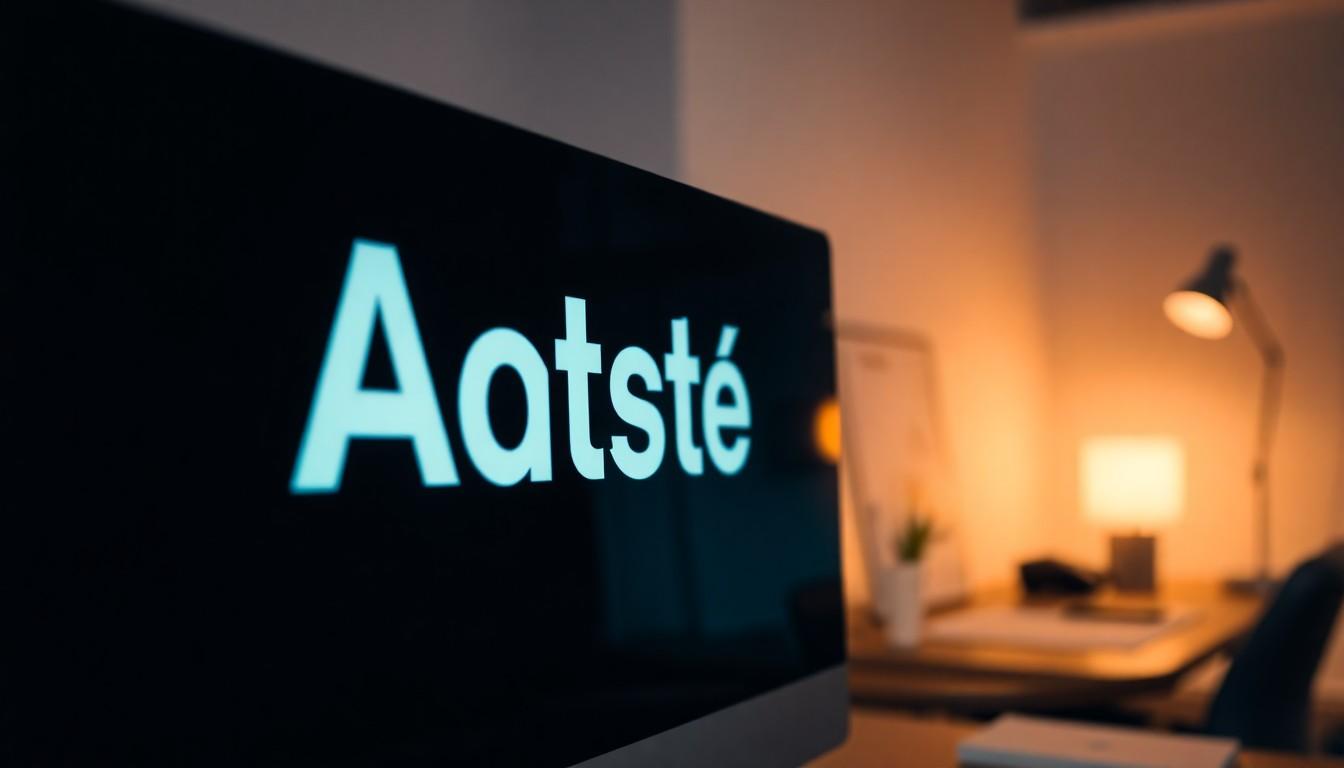Table of Contents
ToggleEver wondered what font ChatGPT uses? It’s a question that’s tickled the curiosity of many. After all, the right font can make or break a conversation. Whether it’s a casual chat or a serious discussion, the font sets the tone. Imagine if it used Comic Sans—talk about a digital identity crisis!
Fonts are more than just letters on a screen; they convey personality and style. As ChatGPT engages users with its witty banter and insightful responses, the font choice plays a crucial role in enhancing that experience. So, if you’re ready to dive into the world of typography and discover the secrets behind ChatGPT’s font, buckle up! This journey’s about to get fun and informative.
Overview of ChatGPT
ChatGPT utilizes a specific font to enhance user interactions. The chosen typeface aims to create a balance between readability and aesthetics. With its clean lines and modern design, this font contributes to an engaging user experience.
Fonts play a crucial role in communication. They can convey emotions and set the tone of conversations. For instance, a rounded font might evoke friendliness, while a serif font can suggest formality. Such dynamics are essential for applications aiming for a personal touch, like ChatGPT.
The impact of typography extends beyond mere appearance. Users may form immediate impressions based on the font style. Studies show font choice can influence perceptions about trustworthiness and professionalism. Thus, selecting the right font proves vital for effective engagement.
Different platforms may display fonts differently. This variability ensures adaptability across various devices and screens. By maintaining clarity, ChatGPT’s font selection caters to users accessing it via smartphones, tablets, or computers.
Research indicates that accessible fonts enhance comprehension. Clear typography reduces cognitive load, enabling users to focus on the conversation. The design decisions surrounding ChatGPT’s font reflect a commitment to user-friendly interface principles.
The font used in ChatGPT significantly shapes interaction experiences. Decisions about font style and readability stem from an understanding of typography’s role in communication. These thoughtful choices help ensure users feel comfortable and engaged while conversing with the AI.
The Importance of Fonts in AI Interfaces

Fonts influence user experience and shape interactions. Clear typefaces enhance readability, reducing cognitive load and helping users engage more effectively.
User Experience Considerations
User experience relies on readability and familiarity. Easy-to-read fonts enable users to grasp information quickly. Moreover, consistent typography across the interface fosters a sense of stability and trust. When users recognize familiar font styles, they feel more comfortable navigating the interface. Engaging typography also reflects the tone of communication, guiding users through the intended experience. Font choices can affect emotional responses, influencing how conversational content is perceived. Ultimately, selecting a user-friendly font improves overall satisfaction and interaction quality.
Brand Identity and Recognition
Brand identity benefits from consistent font usage. Visually distinctive fonts contribute to brand recall, ensuring users easily identify the AI. A well-chosen typeface reinforces brand values and personality, creating a cohesive image. Recognition grows stronger as users encounter familiar fonts across various applications. This consistency fosters trust and loyalty, essential for long-term engagement. Typography serves as a subtle yet powerful element in establishing brand identity, enhancing the overall recognition of the AI interface. Through thoughtful font selection, brands communicate their values effectively while fostering user attachment.
Current Font Used by ChatGPT
ChatGPT employs a modern and accessible font aimed at enhancing user experience and engagement. This choice of typography is not merely aesthetic; it serves important functional purposes.
Analysis of Typography
Typography in ChatGPT incorporates clean lines and balanced proportions, emphasizing readability. Research points to the importance of typefaces that reduce cognitive load. Familiar fonts create a sense of trust and familiarity, which heightens user comfort during interactions. Additionally, the consistent use of typography across platforms helps foster a cohesive brand identity. Clear fonts assist in conveying messages effectively while promoting user engagement with the conversational interface.
Visual Characteristics
The font utilized by ChatGPT showcases a contemporary design that balances elegance with simplicity. Visual characteristics include a sans-serif style, which typically enhances legibility on digital platforms. Characters feature ample spacing, preventing crowding and improving readability. This design choice supports quicker comprehension of text, essential for fluid conversations. Furthermore, the modern appearance aligns with current design trends, making interactions visually appealing. Engaging typography can subtly influence emotional responses, enhancing the overall user experience.
Comparison with Other Fonts
ChatGPT’s font choice reflects a strategic design approach that balances clarity and modern aesthetics. Various fonts used in AI applications serve similar purposes but differ in execution.
Similar Fonts in AI Applications
Fonts like Arial, Helvetica, and Roboto often appear in AI applications. These typefaces prioritize legibility and cleanliness, essential for user interaction. Arial features a simple, sans-serif style similar to ChatGPT’s design. Helvetica offers a modern, sleek appearance, enhancing readability during conversations. Roboto, designed for digital modes, adds a friendly touch to user interfaces. Each font caters to increasing engagement while ensuring clear communication across platforms.
How It Stands Out
ChatGPT’s font distinguishes itself with unique characteristics that enhance user experience. The typeface features balanced proportions and ample spacing, further improving legibility compared to others. Clean lines contribute to a contemporary feel that aligns with current design trends. Emotional responses get positively influenced by the modern appearance of the font. Consistency across platforms reinforces brand identity, generating trust among users. Unlike many standard fonts, ChatGPT’s typography fosters a welcoming and dynamic interface, enhancing the overall engagement.
The font used by ChatGPT is more than just a design choice; it’s a crucial element that shapes user interactions and experiences. Its modern and accessible typeface enhances readability while fostering trust and engagement. By prioritizing clean lines and balanced proportions, ChatGPT’s font not only reflects contemporary design trends but also aligns with user expectations for clarity and familiarity. This thoughtful typography contributes to a cohesive brand identity that resonates with users, making conversations feel more inviting and dynamic. As users explore the nuances of typography, they’ll gain a deeper appreciation for how font choices impact communication in the digital age.




